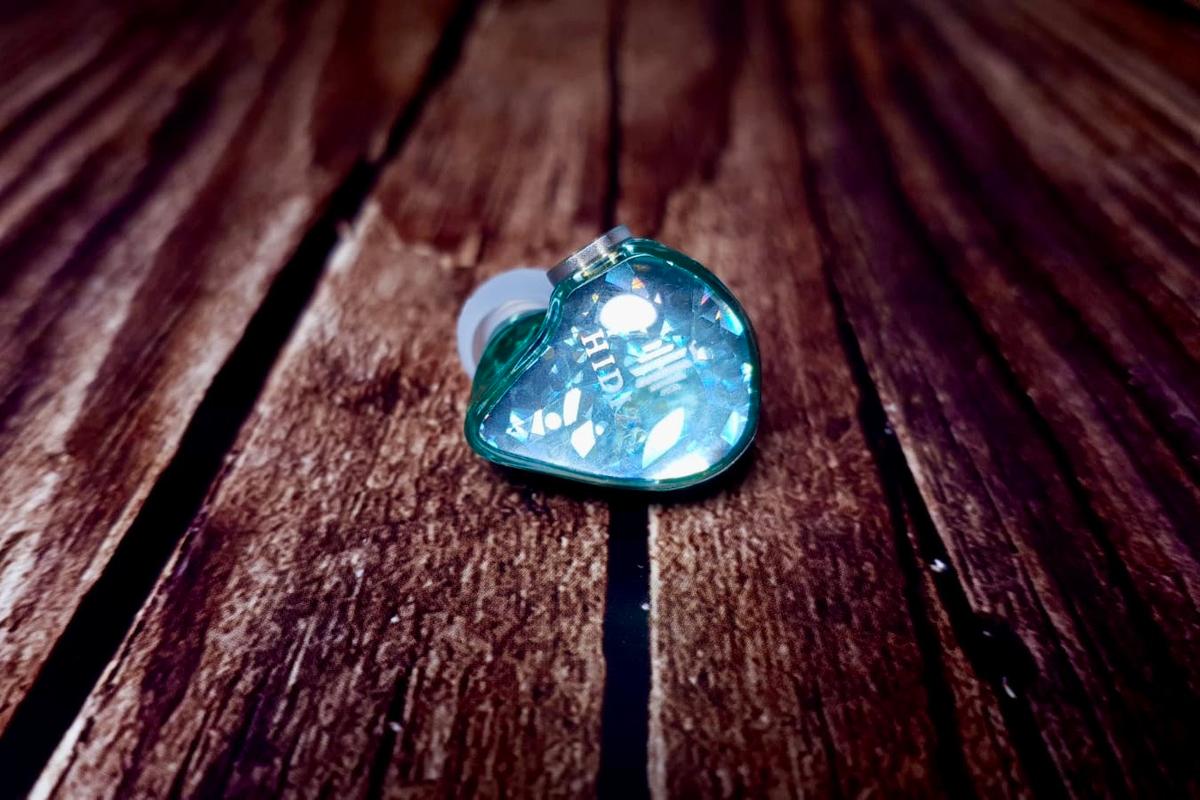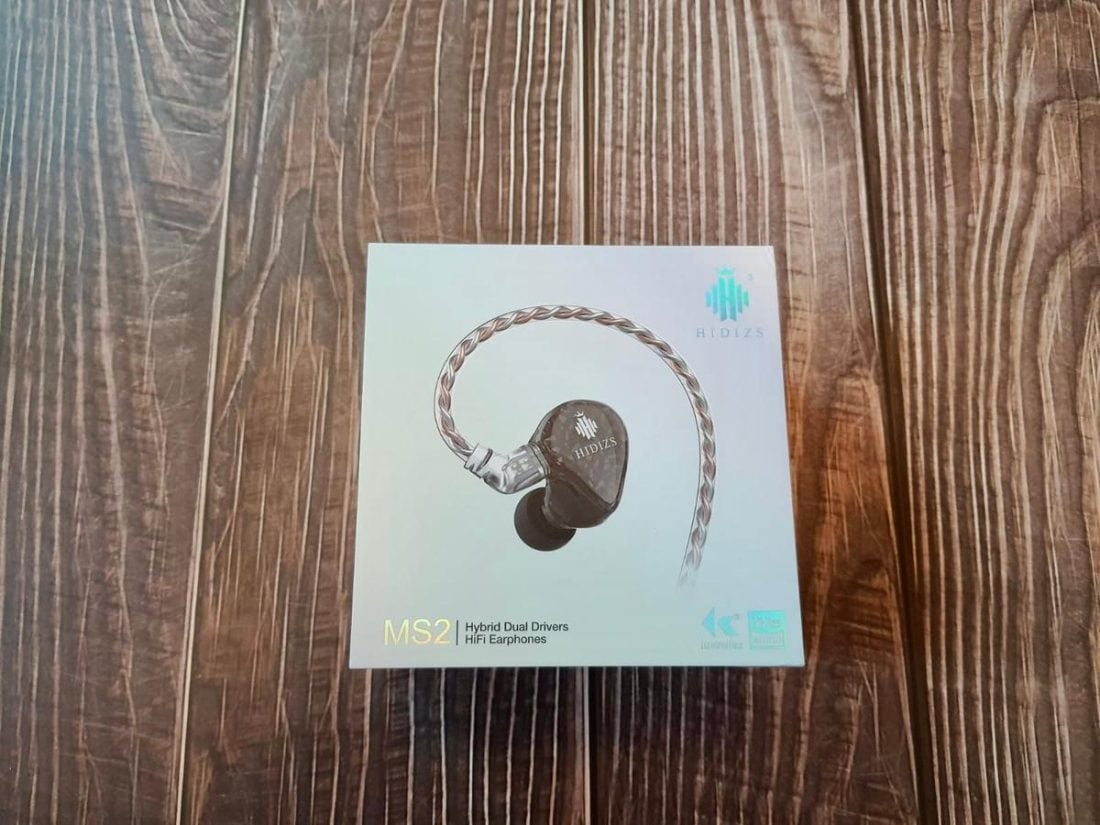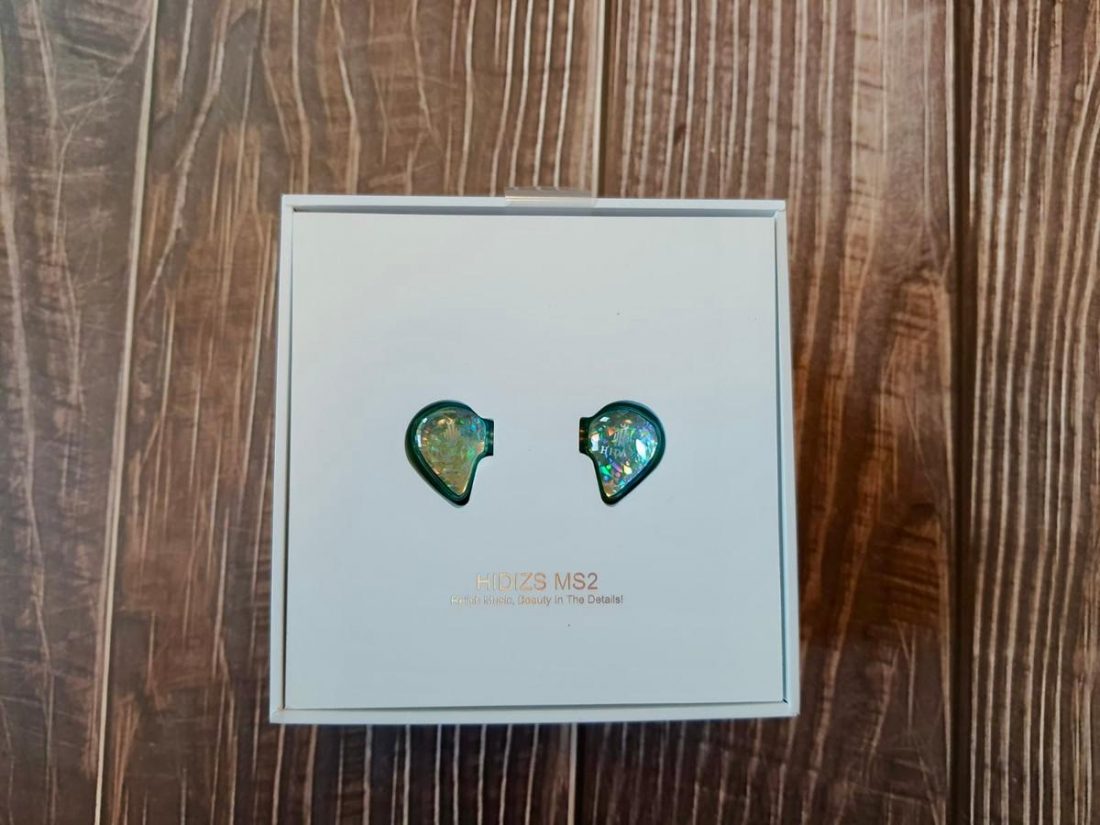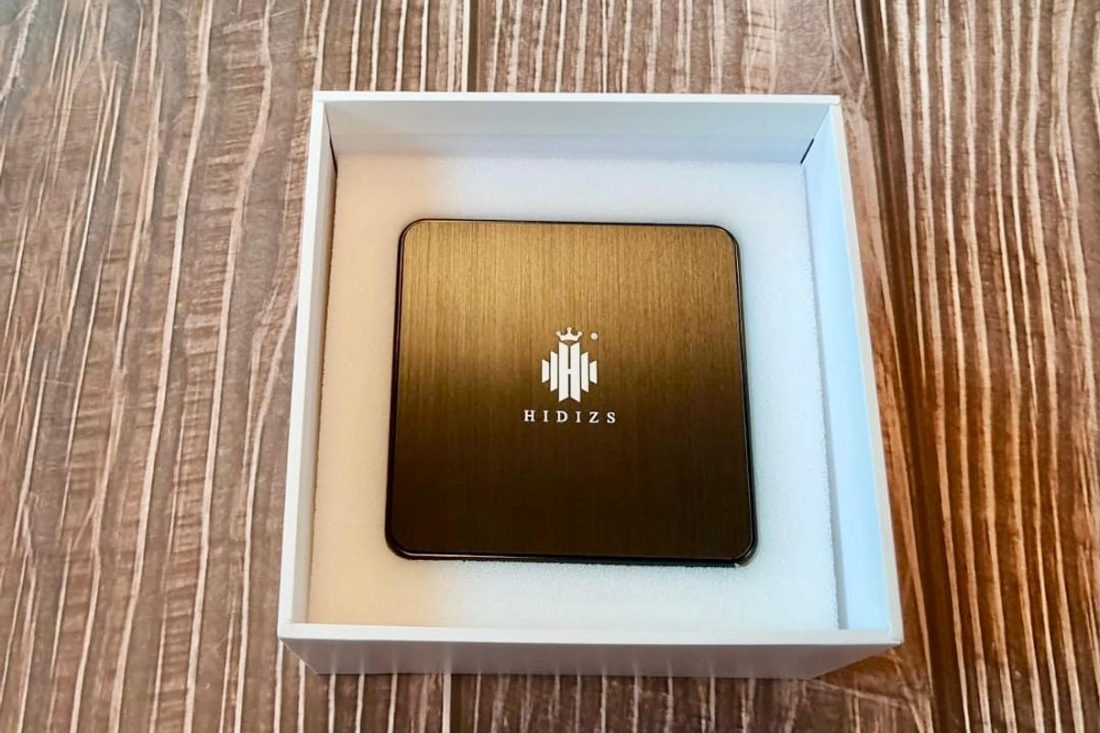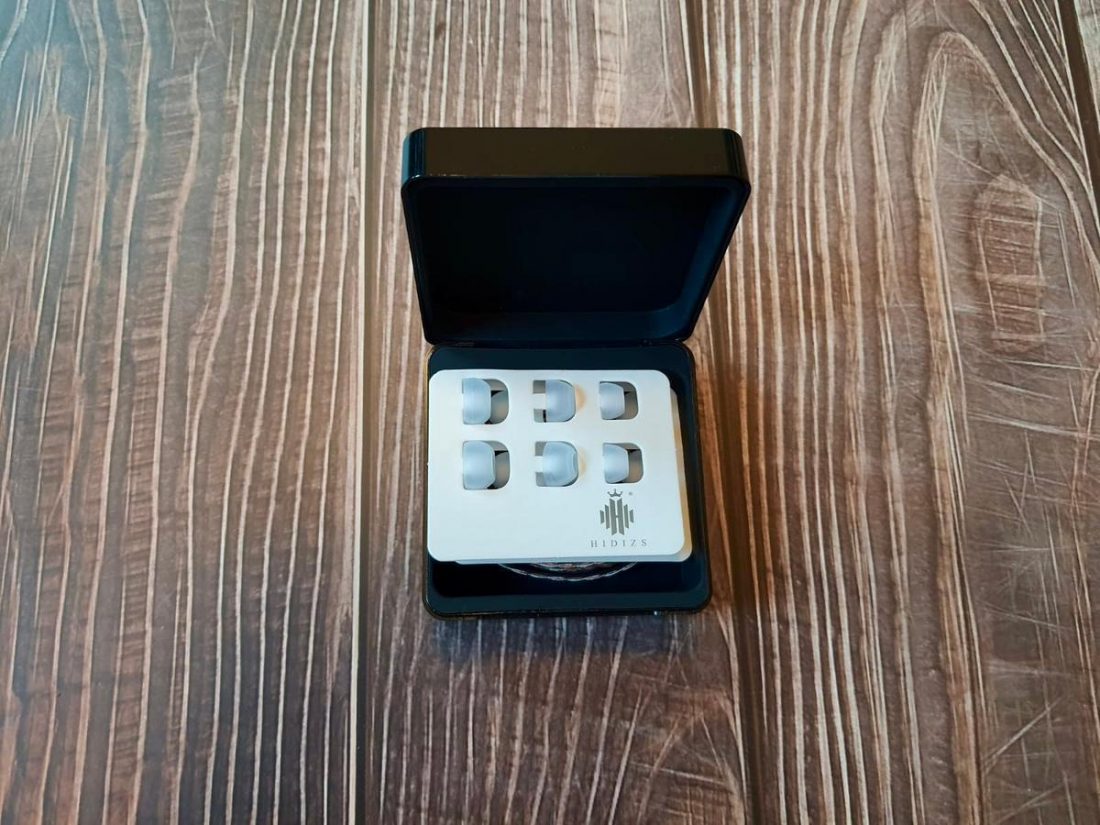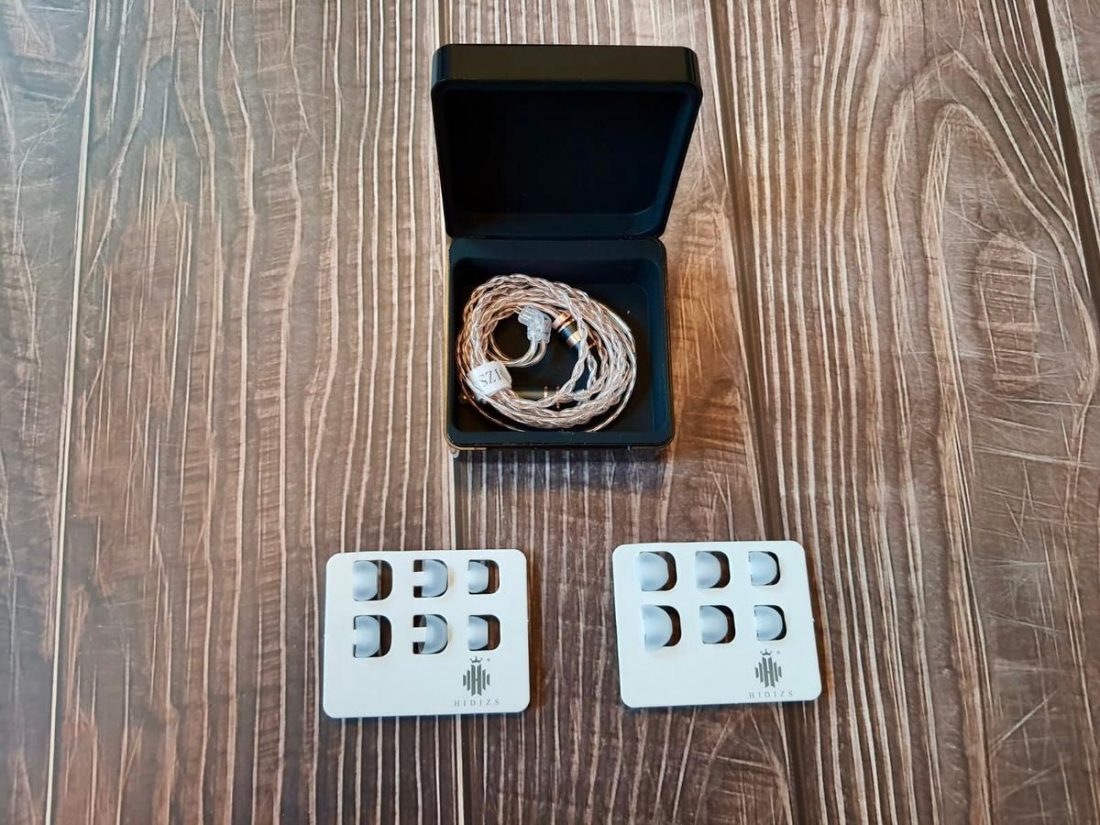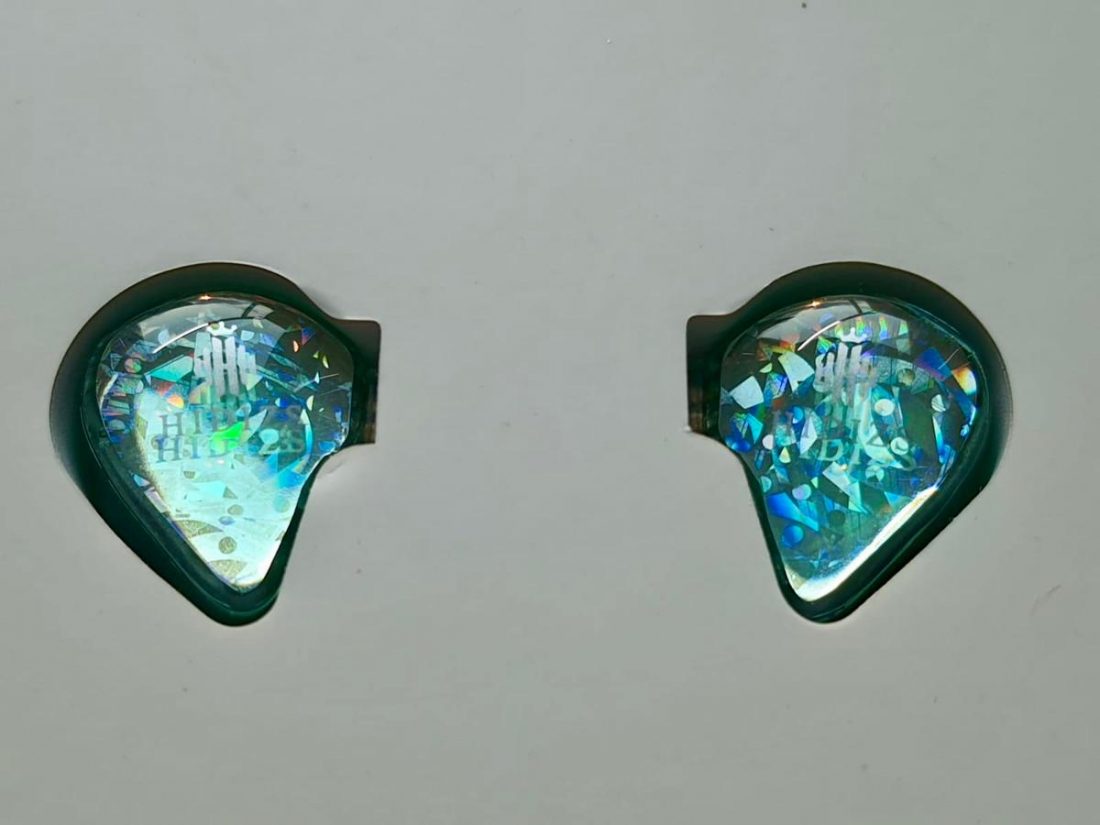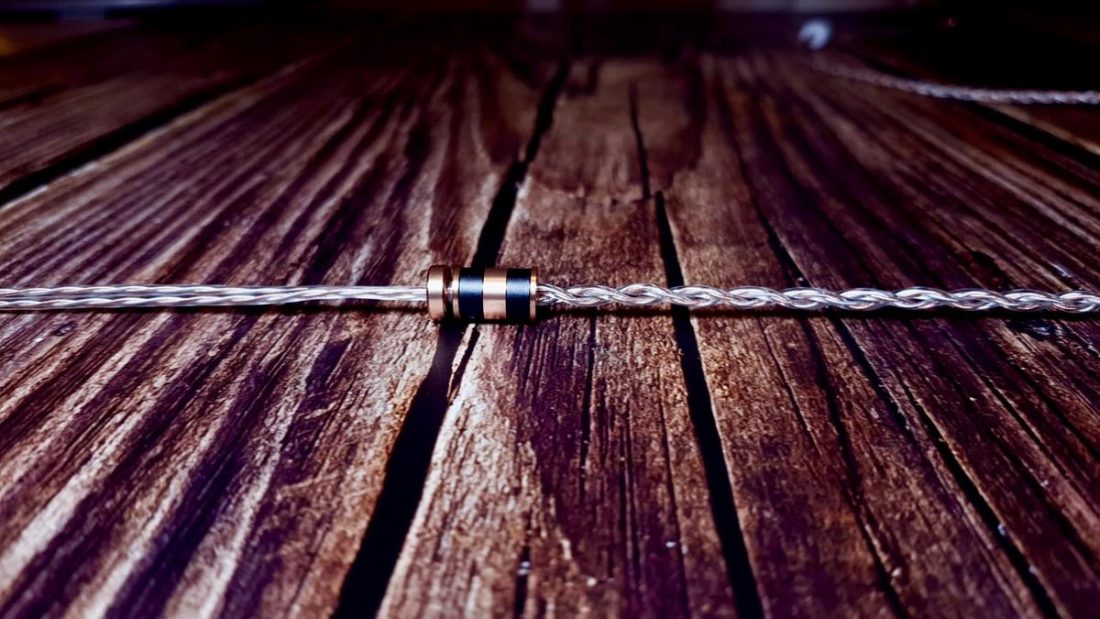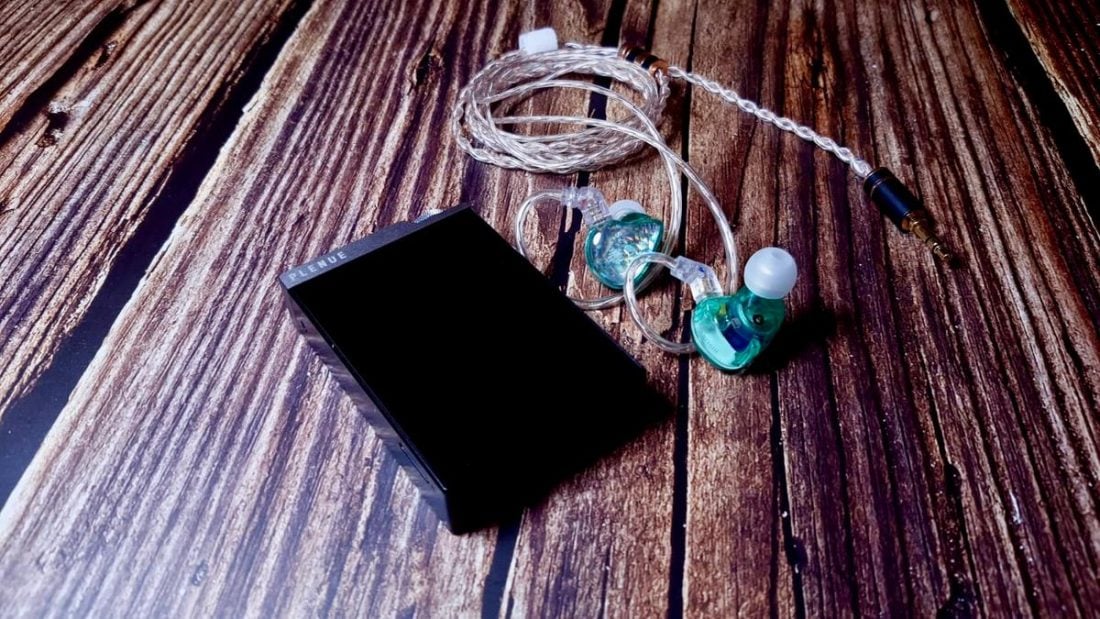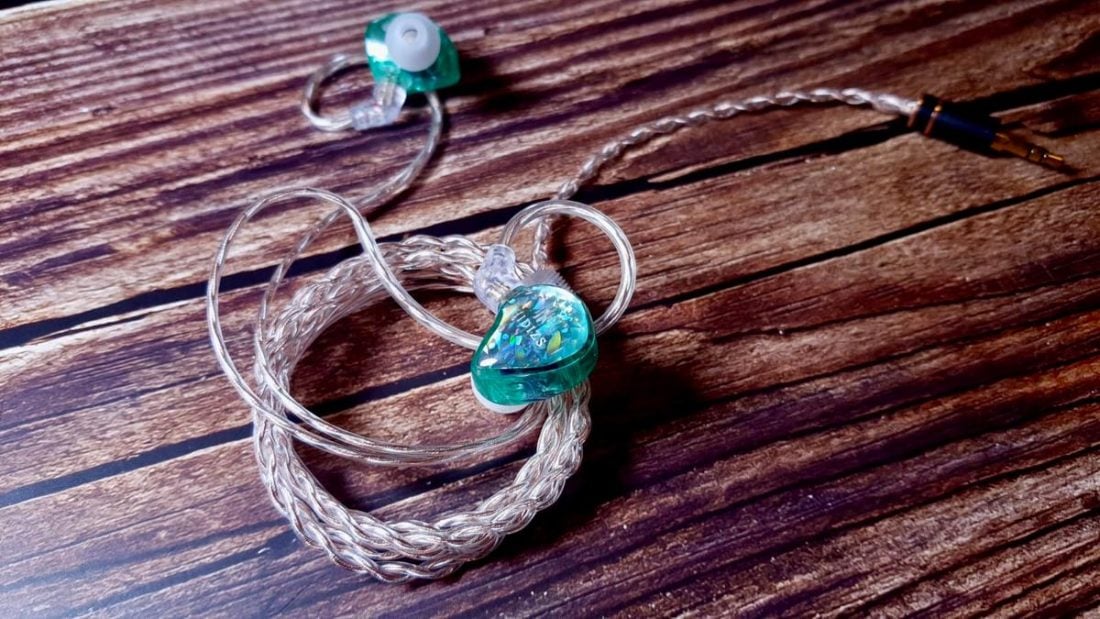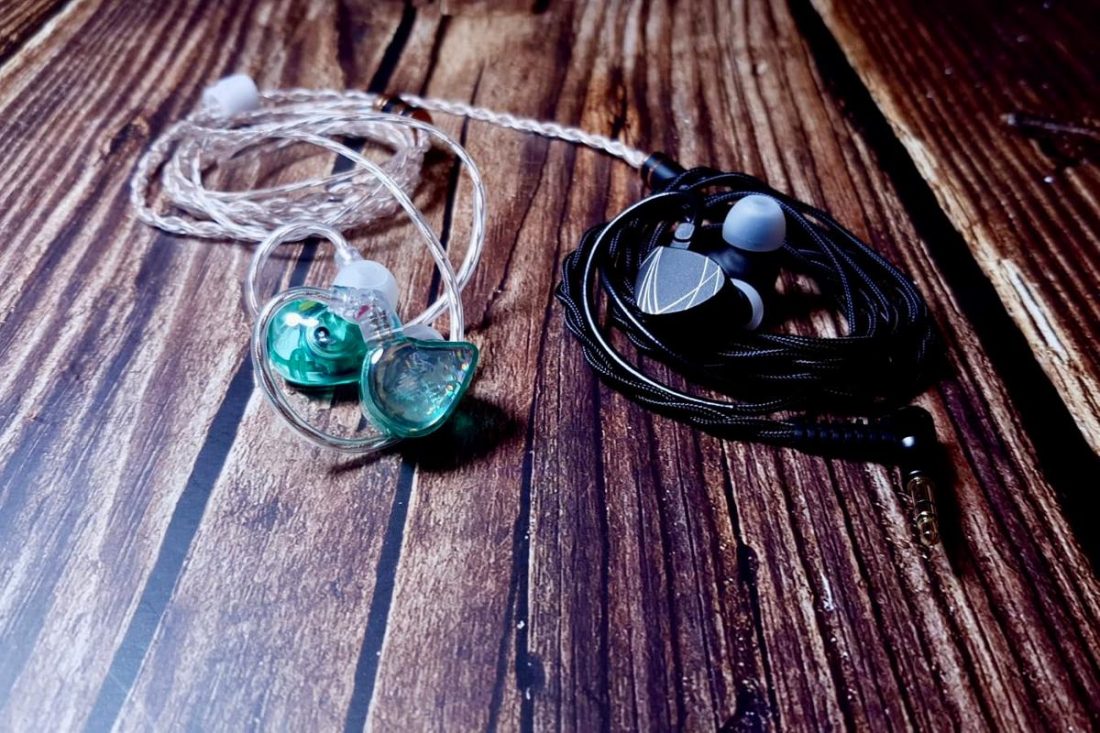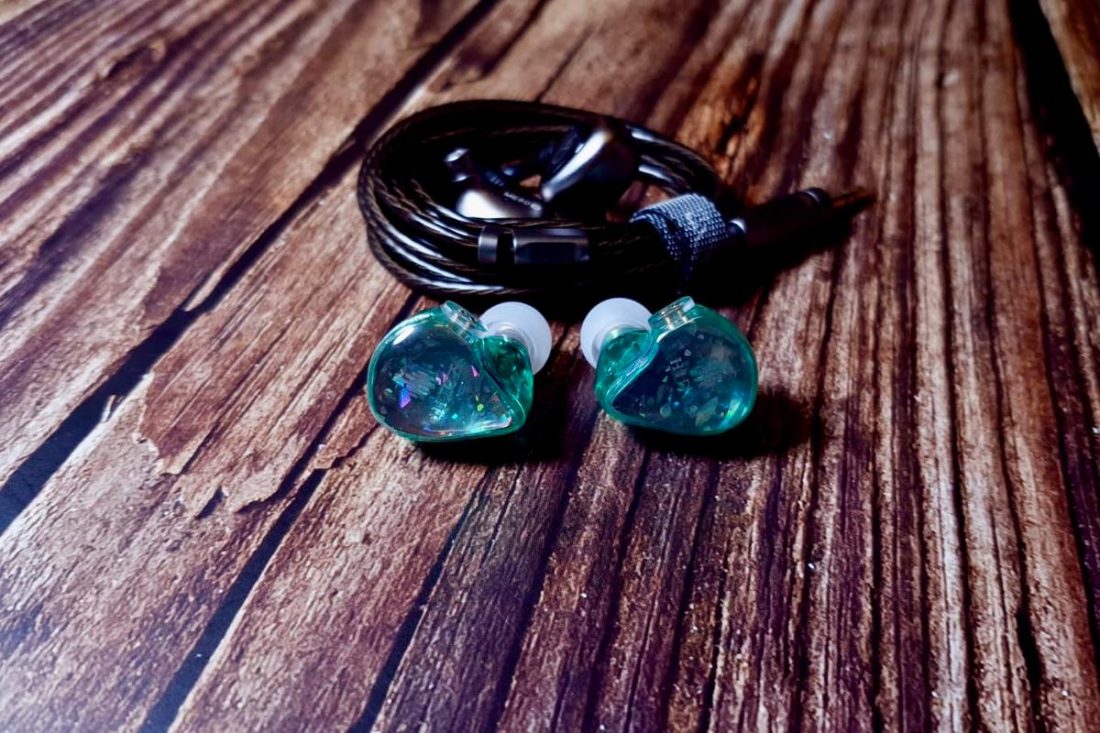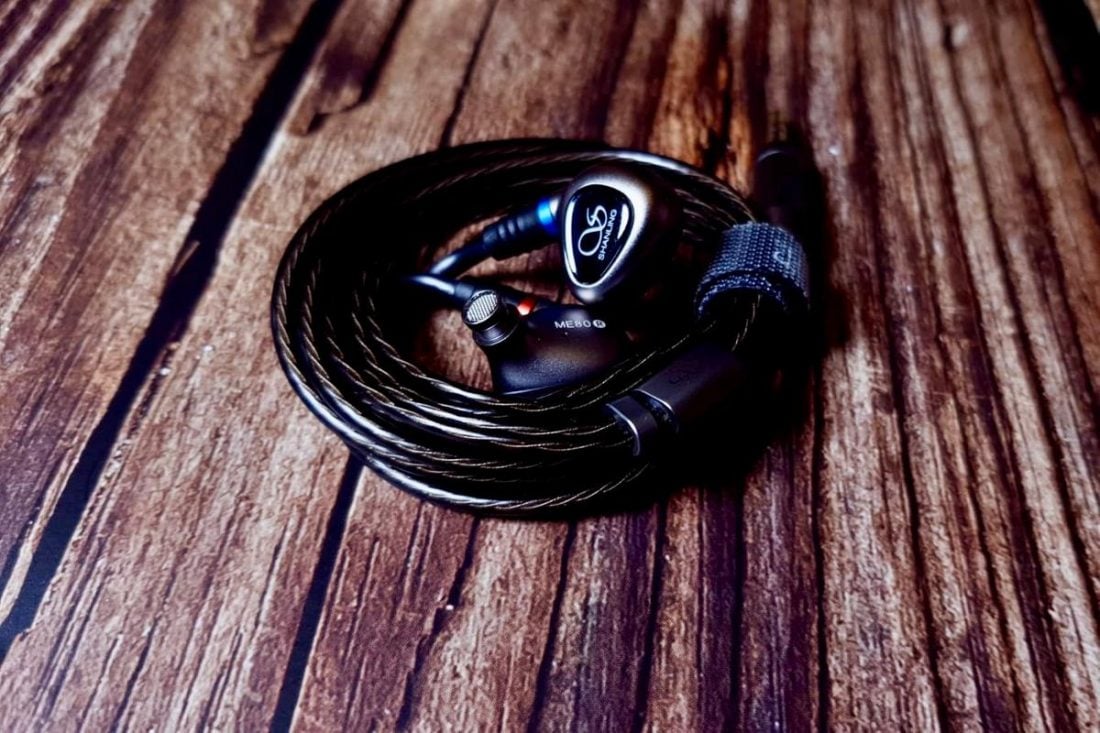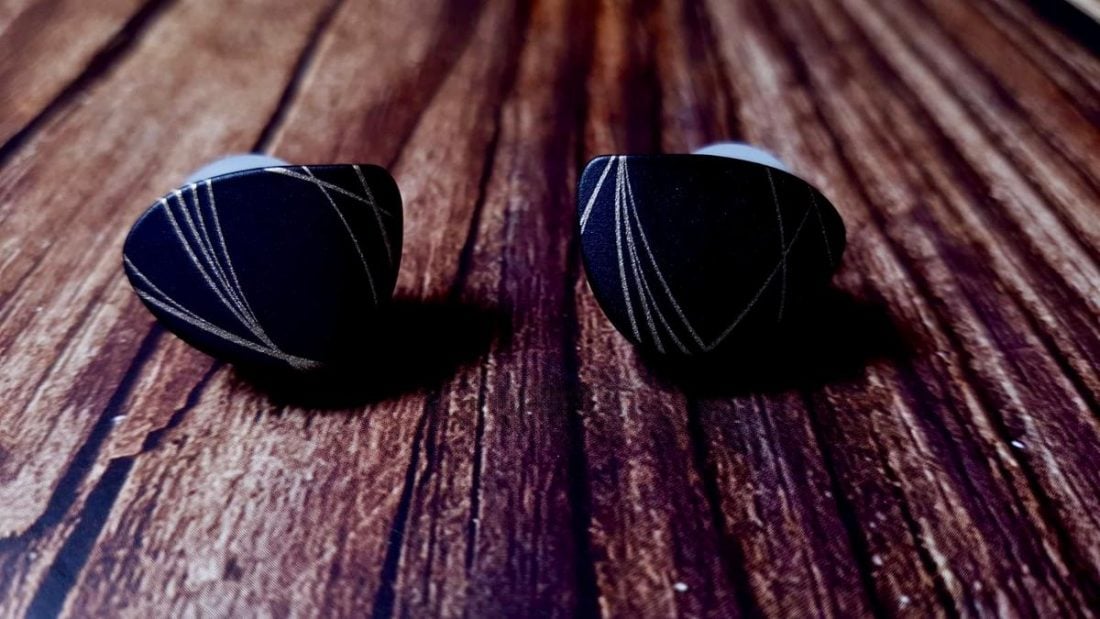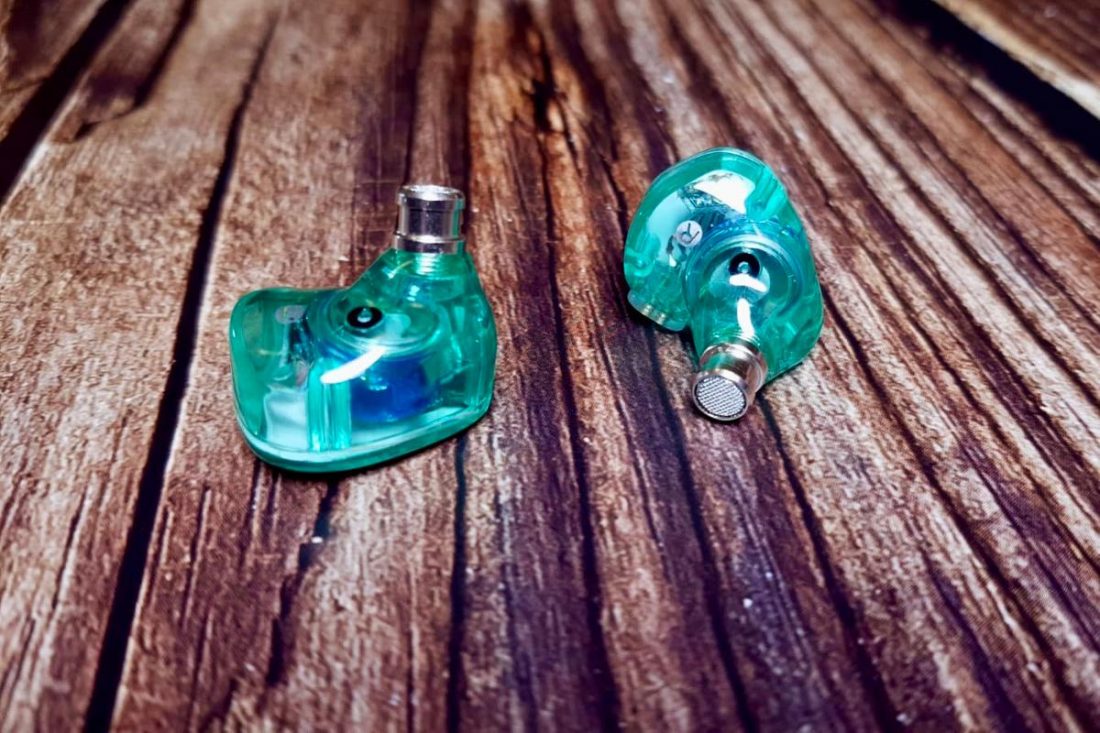The Hidizs Mermaid MS2 are the logical step up from the Mermaid MS1. While the MS1 have a single dynamic driver setup, the MS2 are hybrids, with a dynamic driver and a balanced armature on each side.
About Hidizs
Hidizs was founded in 2009. They started their business by producing quality budget music players. Their AP80, AP80 Pro have been very popular as entry-level DAP options for a lot of head-fiers because of their budget price and high-quality sound. The AP80 Pro also received positive reviews such as this one from Headphonesty. Recently, Hidizs has dipped its toe into the IEM market for. Their first IEM, the Seed (seemingly co-produced with HiBy) weren’t very popular. Then, they launched the Mermaid MS1, which, on the other hand, have been regarded positively. Now, Hidizs has updated their lineup with the MS2.
Technical Specifications
Drivers: 1 x Dynamic driver, 1 x Balanced armature driver Dynamic driver: 10.2mm, dual voice coils & dual voice chambers (Macromolecule Composite Diaphragm) Balanced armature: Knowles RAD-33518-P183 Impedance: 18Ω Sensitivity: 112dB/mW Frequency response: 20 – 40000Hz Chassis material: German eco-friendly resin body Cables: 3.5mm TRS mixed braiding of quad-core wires (high-purity silver wires×2 & OFC wires×2), 1.2m
Packaging and Accessories
The Hidizs MS2 come in a pretty standard white paper box. On the box, you will find the model name, a picture, and technical information about the earphones, such as the use of Knowles balanced armature and the Hi-Res logo. After removing the outer box, you are greeted by the faceplates of the earphones. Under the foam that contains the earphones, you will find the carry case. The case is made of some kind of brushed metal (I assume aluminum) and is lightweight and sturdy enough for daily usage. You will find all the accessories provided inside the carry case. This might not be quite as attractive a presentation as with the Shanling ME80, which displays all the accessories in a beautiful manner. Nonetheless, it gets the job done. More importantly, is the quantity and the quality of the accessories rather than the presentation, right? Hidizs provides 6 pairs of ear tips and a cable with the MS2. The ear tips are in two different shapes. From the photo above, you can see that the 3 pairs on the right are taller, while the 3 pairs on the left are shorter. They each have different sonic performances, and we will get to that later.
Design and Comfort
The MS2 have beautiful faceplates with a shiny design. The Hidizs logos are embedded within the faceplates, and are placed above the shiny phosphorescent bits. As a result, you can appreciate the attractive multi-layering. Personally, I am not a huge fan of the color green, but luckily there are 5 color choices for the MS2, so make sure to check out each color to find the best one for you. While the MS2 do not have a custom IEM-like shell shape like the Hiby Crystal 6 (that I recently reviewed), the MS2 are still quite comfortable to wear. This is mainly due to the MS2’s light weight resin (a type of plastic derived from plants) construction. Once you wear them, you don’t feel the weight. Another reason why the MS2 is comfortable is the very thin and lightweight cable. It is flexible and the cable virtually disappears once you wear them.
Sound Analysis
Before conducting the sound analysis, the MS2 were burned-in for about 150 hours. What is burning in, you ask? Well, you can read more information about it right here. This is a process that I do for every review to ensure consistency. The Hidizs MS2 have an engaging sound signature, somewhere between a gentle U-shape and a W-shape. This means that they are relatively strong at both ends, with a detailed midrange. The reason why I say the MS2 may sound a bit U-shaped, is depending on the ear tip choice, the midrange may sound thinner than the bass and treble response. With the shorter ear tips, the Hidizs MS2 gain more resolution and detail throughout the spectrum. The soundstage is also slightly widened. However, the downside to this is that the sound is more hollow and lacks emotion. Personally, I would trade a bit of resolution for a smoother and more natural presentation, so I went with the taller ear tips for this review. The taller tips give a fuller sound and the bass response is more solid.
Bass
The bass response has a good sense of realism and punchiness to it, as expected from the large dynamic bass driver. On the other hand, unlike some budget dynamic driver earphones, the MS2 achieve this without sacrificing detail and clarity. Some earphones provide good punch and meatiness to the bass but also sound muddy and slow. The MS2 avoid that completely. The trade-off is in sub-bass extension. No, the MS2 aren’t bad in this regard, but they aren’t class-leading in extension. In the mid-bass, the MS2 redeem themselves with punchy yet fast response. This means that even with strong bass tracks, the MS2 remain clean and detailed.
Midrange
The transition from the upper bass to the lower midrange isn’t the most coherent I’ve heard, especially compared to some of the single driver setups in the sub-$100 price range. However, compared to other multi-drivers in this range it is more than acceptable (looking at you, Shuoer H27). Also, the MS2’s merits make the slight incoherency seem insignificant. The midrange of the MS2 is fairly neutral and detailed and does not have a slight tilt towards warmth like the bass response. Instead, the midrange is transparent and has good clarity. With male vocals, the fairly neutral tone means that they may not sound the fullest (especially with the shorter tips), but they always sound clean. The performance for female vocals is more consistent, with good agility and resolution.
Treble
The treble is another strength of the MS2. With the taller ear tips, the treble response is smooth and the transition from the upper midrange and the lower treble is natural and inoffensive. With the shorter ear tips, the lower treble may be harsh at times even though there are more details and resolution up top. This is another reason why I prefer the taller ear tips provided. In the MS2, the lower treble is very controlled with a decent amount of sparkle. This balance is often missing in many other budget hybrid Chi-Fi IEMs. Some of them are lacking treble presence and hence detail. While others have good detail retrieval but way too much treble presence and are fatiguing, such as the original Nicehck NX7 that I bought myself and can’t be more disappointed. The treble extension of the MS2 is outstanding. They fully utilize the balanced armature driver advantages, resulting in clean treble extension and agility. Again, the most impressive thing is that the MS2 achieve such results without sounding grainy or forced.
Technicalities and sensitivity
Because of the good treble extension, the soundstage is airy and decently sized. While not at the level of class-leading, the width and height are not far from the very best in the $100 price range. The soundstage depth, rather unfortunately, isn’t as good. It isn’t bad, but just about average with the competition. In more complex pieces, such as some of the Tchaikovsky symphonies, the layering ability falls short compared to the very best. With a sensitivity of 112dB/mW and an impedance of 18Ω, the MS2 aren’t hard-to-drive earphones at all. Thankfully, they are not particularly prone to hissing. As a result, the Hidizs MS2 are source-friendly and you can happily power the MS2 with anything in your inventory.
Comparison
The price range of about $100 is a crowded zone. There are a LOT of very good performers and each of them have their own strengths. Fortunately, I do have a few of the competitive ones. I will be comparing the MS2 against the Shanling ME80 and the Moondrop Aria. Both the Shanling and the Aria are single dynamic driver earphones, whereas the MS2 are hybrid.
Hidizs MS2 vs Shanling ME80
The ME80 received quite a positive review from none other than yours truly. There are a few similarities between the ME80 and the MS2. For instance, both of them have a good treble performance. From the review of the Shanling, I stated that “the treble extension is nicely done by the ME80. They can extend high up while sounding effortless. There are a handful of earphones in this price range that also provide a similarly impressive treble extension (Shuoer Tape), but, the Shanling do it more coherently and naturally than most.” The treble response is where the two are the most similar. They both extend well, and show a good amount of detail. However, the ME80 sound brighter and so they may seem that they have more resolution. This is also the case in the midrange. The ME80 sound brighter than the more neutral MS2, but neither of them is particularly harsh. Down in the bass response, the MS2 give a better punch and warmth than the ME80. They both extend similarly down low, but the MS2 have more quantity and richness in bass response. Both of them have a relatively fast bass, but because of the lighter bass of the ME80, they sound cleaner than the MS2.
Hidizs MS2 vs Moondrop Aria
My sister is a Moondrop fan so she bought the Aria herself. Since then, the Aria have become my benchmark for the sub $100 price range. Unlike the MS2’s dual driver setup, the Aria have a single dynamic driver. Despite the difference in the number of drivers, I have always promoted the idea that the number of drivers does not always correlate to good sound, tuning matters a lot. Let’s see how the MS2 perform against the Aria. The Aria have a warmer tuning throughout the spectrum over the MS2’s rather W-shaped or neutral tuning. The coherency is also better in the Aria, given that the Aria only have 1 driver per side in contrast to the double drivers in the MS2. Overall, the Aria and the MS2 trade punches from top to bottom. Let’s dig deeper. Speaking of digging deeper, the Aria extend deeper into the sub-bass region than the MS2. The Aria also have more mid-bass quantity. On the other hand, the MS2 have faster bass punches so the MS2 sound cleaner down low. In the midrange, the MS2 are more neutral, whereas the Aria are warmer. This means the MS2 may sound thinner at times, but also provide better transparency. The Aria however, can be more emotional and enjoyable, and vocals sound more natural and organic. Up top, both have good resolution. The MS2, with the help of the additional balanced armature, give better treble extension and agility. Yet, the Aria are less shouty and are warmer, so they are easier to listen to and less fatiguing. They both have their own strengths, so you can decide depending on your taste and preferences.
Where to Buy
You can buy the Hidizs MS2 from various places.
Verdict
Budget audiophiles should be very happy right now. In the past, buying budget items meant compromises and lack of choice, especially for portable Head-fi. However, in recent years, the market is quickly growing, and the compromises are diminishing. Both the quantity and the quality of budget items are increasing exponentially. However, this also means that it is getting harder and harder for products to stand out, and more difficult for us consumers to choose the best products. With the MS2, Hidizs proves that it is still possible for companies to bring out new and exciting products into this crowded market. No, they may not have the most coherent tuning, nor the best selection of accessories. However, the MS2 gain my respect through their excellent resolution, good treble response, engaging tuning, and good-looking faceplates. Excellent work, Hidizs. I can’t be certain if the MS2 are the absolute top IEMs right now in this price range, but I am sure that they are definitely among the best.
